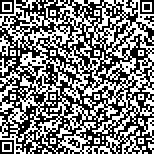| 摘要: |
| 于1987年3月一1988年1月,在室内水池中观测孔径为0.5 mm,孔距分别为2.5,5.0,7.5,10.0,20.0 cm5种固定气泡幕的视觉特征和声学特征;对其中孔距分别为5.0,10.0和20.0 cm 3种气泡幕对黑鲷的阻拦作用予以重点分析研究,以期探讨适合阻拦黑鲷的最适孔距。结果表明,这3种气泡幕对黑鲷都具有明显的阻拦作用,平均阻拦率分别为75.l%,55.5%和54.5%;其中,以5.0 cm孔距的气泡幕阻拦效果最好,与其他两种气泡幕的阻拦率差异极显著(P<0.01),而孔距为10.0 cm和20.0 cm气泡幕之间的阻拦效果无显著差异。该种鱼对3种气泡幕均无明显的适应现象。 |
| 关键词: 气泡幕 孔距 阻拦效果 黑鲷 |
| DOI: |
| 分类号: |
| 基金项目:农牧渔业部资助项目,1987 |
附件 |
|
| THE INTERCEPTING EFFECTS OF BUBBLE CURTAINS WITH DIFFERENT AIR-HOLE SPACING ON SPARUS MACROCEPHALUS |
|
Zhao Xiguang1, He Daren2, Liu lidong2
|
|
1.College of Fisheries,Oniversity of Qingdao,Qingdao 266003;2.Department of Oceanography,Xiamen University,Xiamen 361005
|
| Abstract: |
| In order to investigate the intercepting effects of immovable bubble curtains (IBC) with different air-hole spacing on black porgy (Sparus macrocephalus), indoor experiments were conducted from 1987 to 1988. The visual and acoustic characteristics of IBC with a 0.51mn air-hole diameter and different air-hole spacing were recorded, described and analyzed. The air-hole spacing of each IBC was 2.5, 5.0, 7.5, 10.0 and 20.0 cm and only the intercepting effects of the IBC with 5.0, 10.0 and 20.0 cm air-hole spacing on the fish were studied. The IBC were constructed from a hard polyethylene pipe (17.5 mm i.d.), fixed on the bottom middle of an experimental tank, from which columns of bubbles escaped through a series of holes (0.5 mm, i.d.) located on the upper side of the pipe at regular intervals. Compressed air with 0.25 kg/cm2 was supplied by a compressor (Model: A1301, Japan). The acoustic frequency spectra of bubble curtains on the bottom and on the surface were recorded using a HP-3582A spectrum analyzer at 20 cm from the central bubble curtain. The experimental tank (3.5 m long, 2.5 m wide, and 0.8 m deep), filled with seawater with 3.5 m diaphaneity, was surrounded with black cloth. The tank top was uniformly illuminated with fluorescent lamps giving 86 lx on the central surface. The experimental fish, 8.0 - 13.5 cm in body-length, were maintained in the laboratory for l - 2 days prior to test. Twenty-five fish in good conditions were randomly selected and divided into five groups to be tested in each IBC experiment. The five selected fish were put in the experimental tank and allowed to acclimate the new environment for 12 - 24h prior to test. Each experiment was carried out by dividing into two testing sections, the aeration experiment and the control experiment (no IBC). The observation period of each section was l h. The control experiment was performed randomly before or after the aeration experiment. Three replicates were successively carried out for each fish group. For all the experiments, the behaviors of fish were recorded with a CC-1500 television camera mounted over the tank and a video-tape, for subsequent analysis. The time at which fish passed through the bubble curtain or the air pipe and the number of passage were registered readily. The IBC appear to be a bubble wall when the air-hole spacing is 5.0 cm or 2.5 cm. The bubble columns of IBC were distributed uniformly. When the air-hole spacing increases to 7.5 cm, 10.0 cm or 20.0 cm, the IBC appear to be a bubble barrier, rather than a bubble wall, and the bubble columns of IBC became sparse. In all acoustic frequency spectrums of these five IBC, either recorded in surface or bottom, there were two acoustic pressure peaks, one in low frequency area (below 1 kHz), and the other in high frequency area (3 - 9kHz). The acoustic pressure of IBC recorded in surface was lower than that in bottom. The acoustic pressure both in the low and high frequency areas dropped with the decrease or increase in air-hole spacing. In the l h control experiment, the average numbers of passage through the air pipe were 448, 715, 314 for 5.0, 10.0 and 20.0 cm, respectively. Fish behavior changed distinctly since IBC existed. Their swimming became faster than that in the control experiment and average numbers of passage through the bubble curtain in l h aeration experiment decreased to 117, 304, 114 for 5.0, 10.0 and 20.0 cm, respectively. Significant intercepting effects of these three IBC on the fish behaviors were observed, but these IBC were not complete obstacles to black porgy. The average obstructing rates were 75.1%, 55.5% and 54.5% for 5.0, 10.0 and 20.0 cm air-hole spacing, respectively. The results demonstrate that the intercepting effects of IBC are affected significantly by the air-hole spacing. There are significant differences between the obstructing rate of 5.0 cm IBC and that of 10.0 cm or 20.0 cm (P < 0.0l). However, there is no significant difference between 10.0 cm and 20.0 cm (P > 0.05). In addition, black porgy has no marked adaptation to these IBC. |
| Key words: Bubble curtain, Air-hole spacing, Intercepting effect, Sparus macrocephalus |
